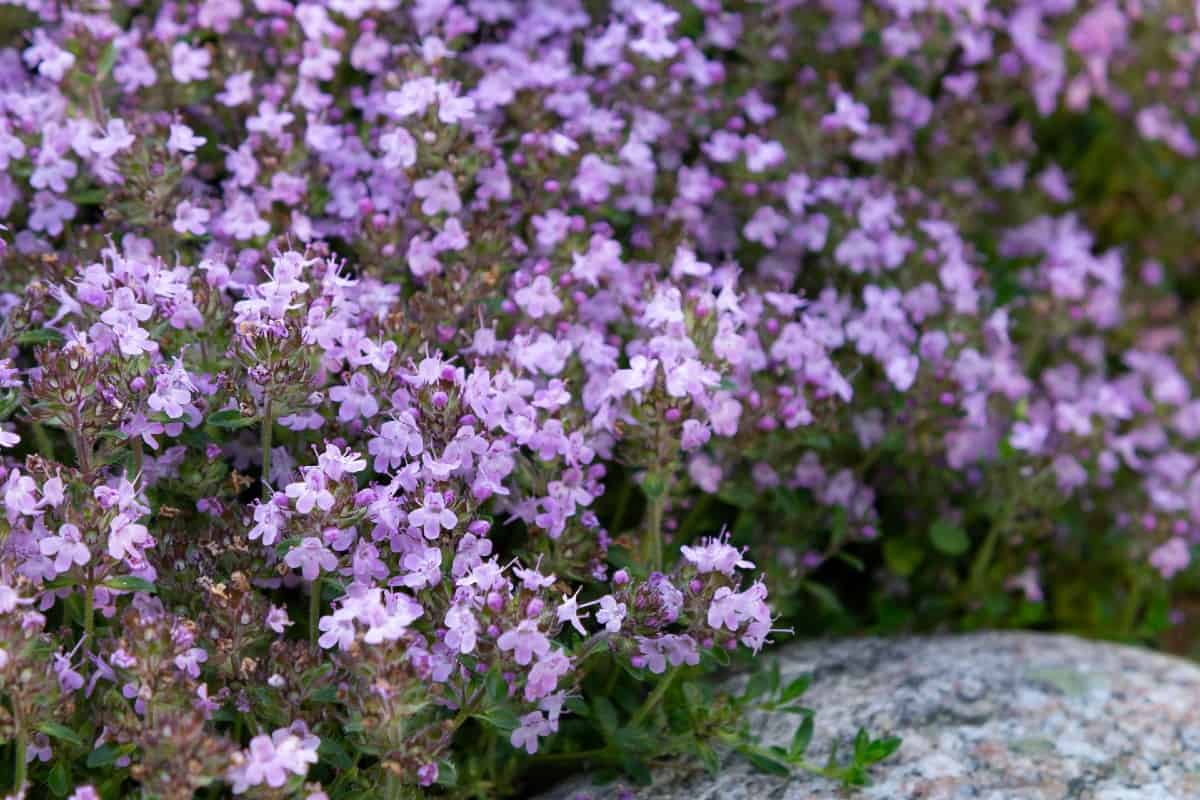
Culinary and ornamental herbs like thyme, oregano, and marjoramĬonsider adding ground covers to your landscape as a different way to reduce weeds, prevent erosion, help pollinators and more.Strawberry ( Fragaria species / cultivars).Bigroot Geranium ( Geranium macrorrhizum).Soil should be kept moist but not wet, as the growing creeping thyme plant is susceptible to root drowning and edema.
#Thyme ground cover shade full#
Barren strawberry ( Waldsteinia ternata) Although this ground cover prefers well-drained lightly textured soils, it will grow quite well in less than desirable medium and thrive from full sun to light shade environments.Japanese spurge ( Pachysandra terminalis).The solution might be running ¼ inch in-line drip between the pavers or maybe line the path with pop-up micro. Next, you’ll need to irrigate the plants.

Also remember to cover the bare spots with some light soil or compost that will help retain surface moisture until the plants fill in.

They also are used in restoration projects. Sedges grow in full sun but are also good ground covers for shady areas such as under trees and shrubs. One of my favorites is Carex caryophyllea ‘Beatlemania’, common name Beatlemania Spring Sedge or Mop-headed sedge. I have a few ground covers in my yard that have worked out pretty well. But ground covers can also enhance soil health, provide food and habitat for pollinators and other beneficial insects, and reduce soil erosion. I think if you asked most people why we plant ground covers, they would say to reduce weed pressure or to add beauty. Plants grown as ground covers can be ornamental or edible, herbaceous or woody, and perennial, biennial or annual plants. Ground covers can cover an area of your yard or garden for one season (annuals), a few seasons, or many years. It can be a type of mulch, hardscape materials like patio block, or a growing plant. For all the gardeners who are music lovers: 'Beatlemania' spring sedge or mop-headed sedge. Although this ground cover prefers well-drained lightly textured soils, it will grow quite well in less than desirable medium and thrive from full sun to light shade environments.


 0 kommentar(er)
0 kommentar(er)
